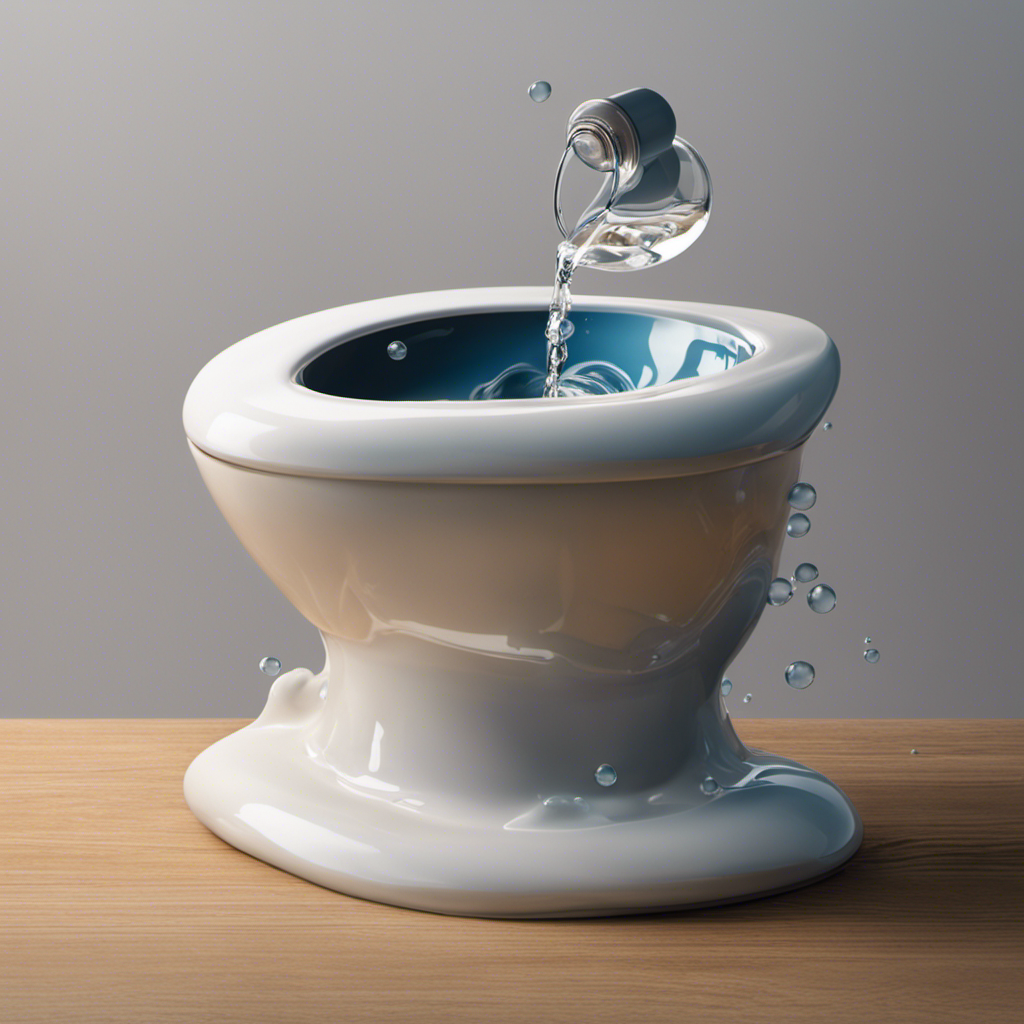Ever encountered the annoying issue of a toilet that flushes slowly? It’s a common experience for many, standing by while the water slowly ebbs away.
But fear not! In this article, we’ll guide you through the steps to fix this pesky issue. From checking for clogs to adjusting the water level, we’ll provide you with expert tips and techniques.
So, let’s dive in and master the art of fixing a slow flushing toilet once and for all!
Key Takeaways
- Inspect the siphon jet and drain pipe for blockages and remove them using appropriate tools.
- Inspect and replace the flapper if necessary to resolve slow flushing issues.
- Adjust the water level for improved flush performance by finding the right balance.
- Perform regular maintenance tasks such as cleaning rim holes, descaling, checking fill valve, and clearing vent pipe to ensure optimal toilet functioning.
Check for a Clog
To diagnose the cause of a slow flushing toilet, we begin by checking for a clog. The first step is to inspect the siphon jet. This is a small opening located at the bottom of the toilet bowl that helps create the suction needed for a proper flush. Sometimes, debris can accumulate in this area, obstructing the flow of water and causing a weak flush. We can use a small mirror and flashlight to get a clear view of the siphon jet and remove any blockages using a wire hanger or a brush.

Next, we need to check the drain pipe. A clog in the drain pipe can also lead to a slow flushing toilet. We can use a plunger or a plumber’s snake to clear any obstructions and restore proper flushing functionality.
Inspect the Flapper
Now let’s take a closer look at the flapper, an essential component of the toilet.
When it comes to fixing a slow flushing toilet, one of the first things to inspect is the flapper.
We’ll discuss the options for replacing the flapper and common problems that can occur with this crucial part.
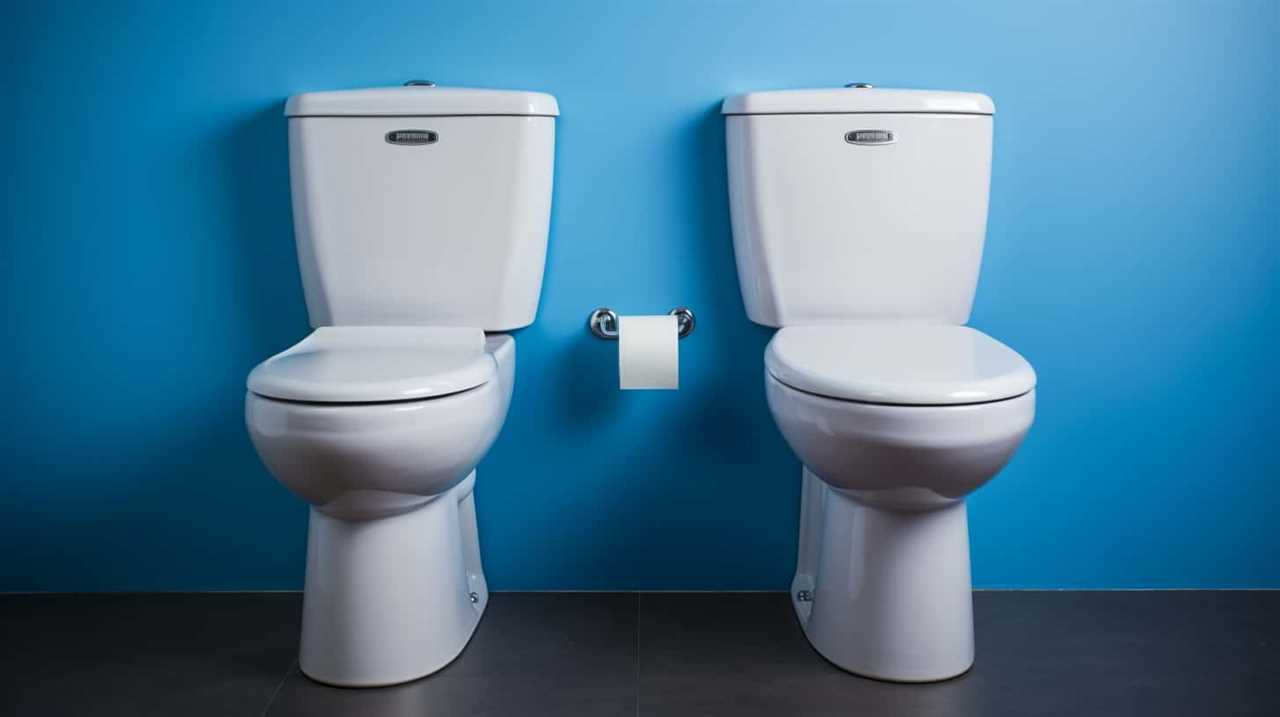
Flapper Replacement Options
How can we effectively inspect the flapper for potential replacement options in order to fix a slow flushing toilet?
When it comes to fixing a slow flushing toilet, inspecting the flapper is crucial. The flapper is a rubber valve that controls the flow of water from the tank to the bowl. Over time, the flapper can become worn or damaged, leading to a decrease in flushing performance. By inspecting the flapper, we can determine if it needs to be replaced.
Some signs that indicate flapper replacement are visible wear and tear, leaks, or a flapper that doesn’t seal properly. Replacing the flapper has several benefits, including improved flushing efficiency and water conservation. When considering flapper replacement options, it’s important to consider the cost, which typically ranges from $5 to $20.
Taking the time to inspect and replace the flapper can help resolve common slow flushing toilet issues and restore optimal flushing performance.

Transition: Now that we understand the importance of inspecting and replacing the flapper, let’s explore some common flapper problems that may arise.
Common Flapper Problems
Let’s examine some common flapper problems to inspect the flapper for potential issues.
Flapper maintenance is crucial to ensure proper flushing performance in a toilet. One common problem is a worn-out flapper. Over time, the flapper can deteriorate, causing leaks and inefficient flushing. To repair this, simply replace the flapper with a new one.
Another issue could be a misaligned or improperly seated flapper. If the flapper isn’t aligned properly, it may not seal the flush valve completely, leading to water leakage. Adjusting the alignment or reseating the flapper can solve this problem.
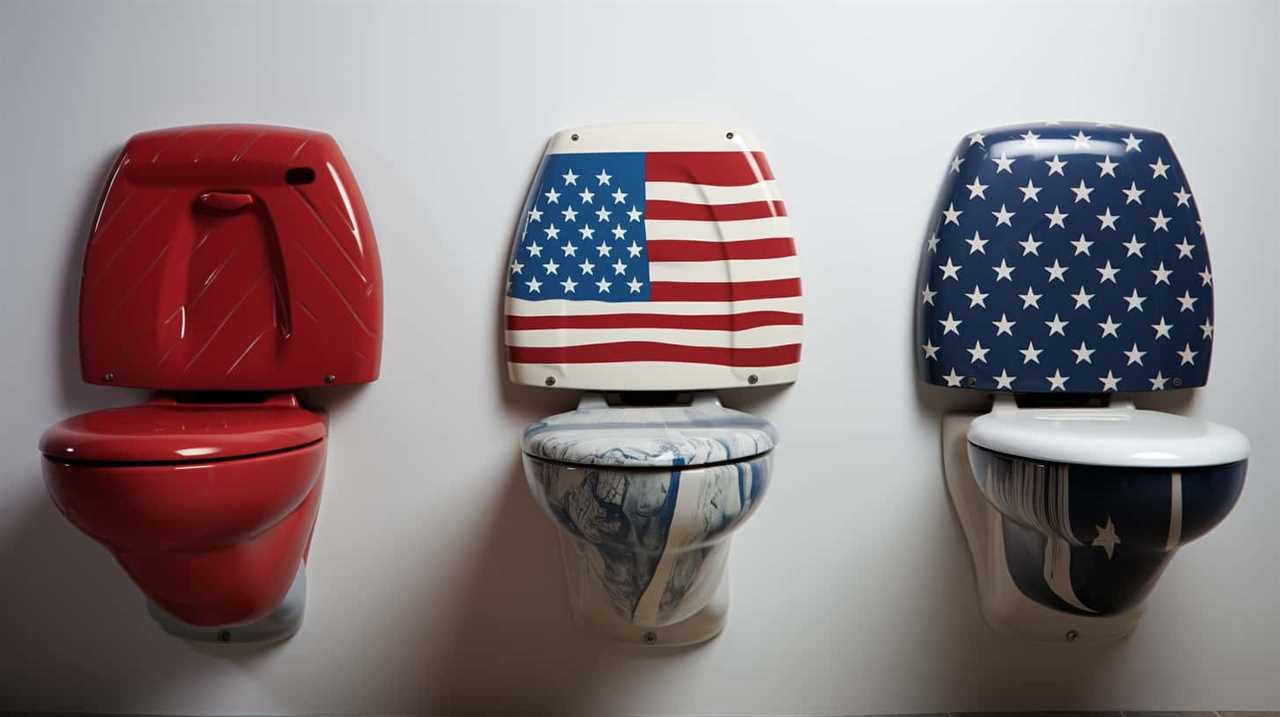
Additionally, a flapper chain that’s too loose or too tight can cause flushing issues. Adjust the chain to ensure proper tension, allowing the flapper to open and close smoothly.
By inspecting the flapper and addressing these common problems, you can ensure optimal toilet performance.
Now, let’s move on to the next section and learn how to adjust the water level.
Adjust the Water Level
Let’s talk about how adjusting the water level in your toilet can improve its flush performance.
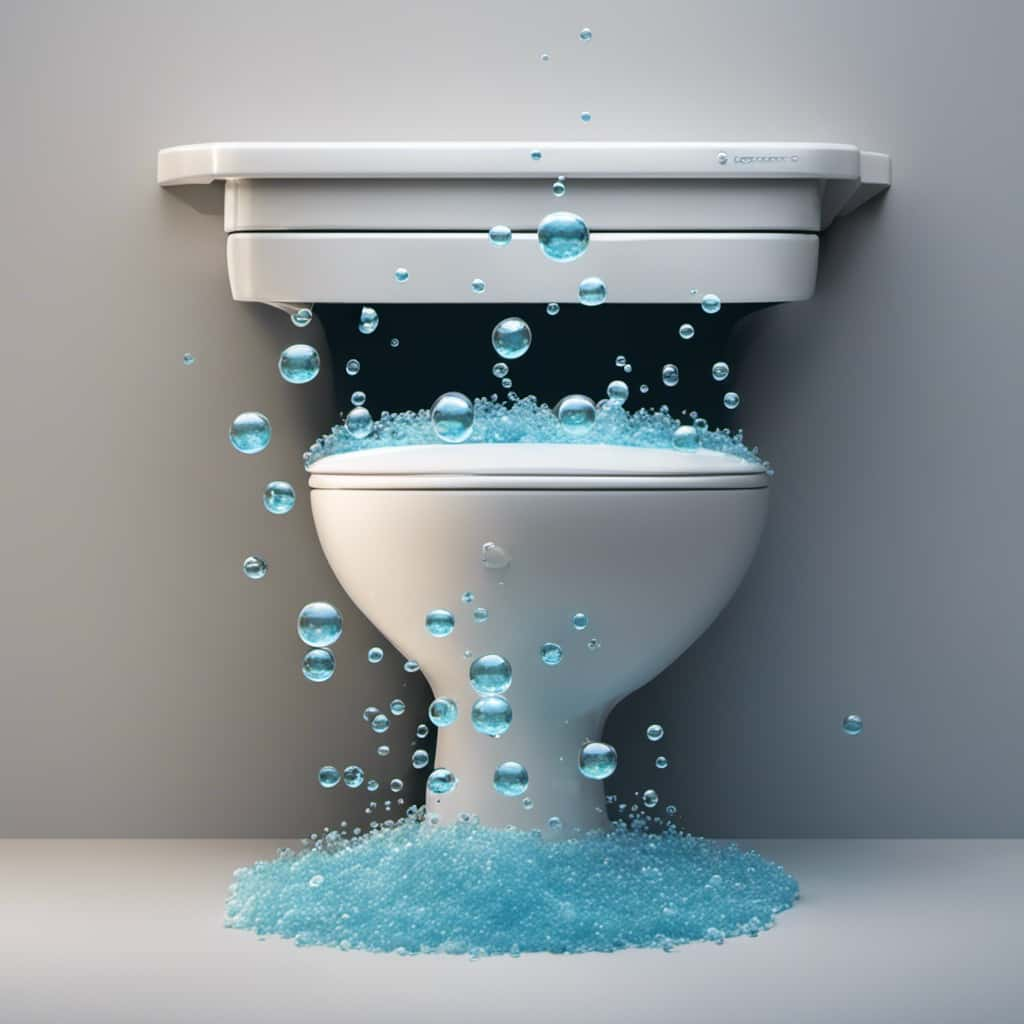
Maintaining the optimal water level is crucial for efficient flushing, as it ensures that there’s enough force to carry away waste effectively.
Optimal Water Level
To optimize the water level in a slow flushing toilet, we can adjust it accordingly. One common cause of a slow flush is a low water level in the toilet tank. The water level should be adjusted to ensure that it’s at the appropriate height for optimal flushing performance.
To do this, we need to locate the toilet flapper and adjust the water level adjustment screw or rod as needed. By increasing the water level, we can provide more force and momentum to the flush, helping to clear the waste effectively. However, it’s important not to set the water level too high, as it can lead to water overflow. Finding the right balance is key to improving the flush performance of your toilet.
Now let’s move on to the next section, where we’ll discuss flush performance improvement in more detail.
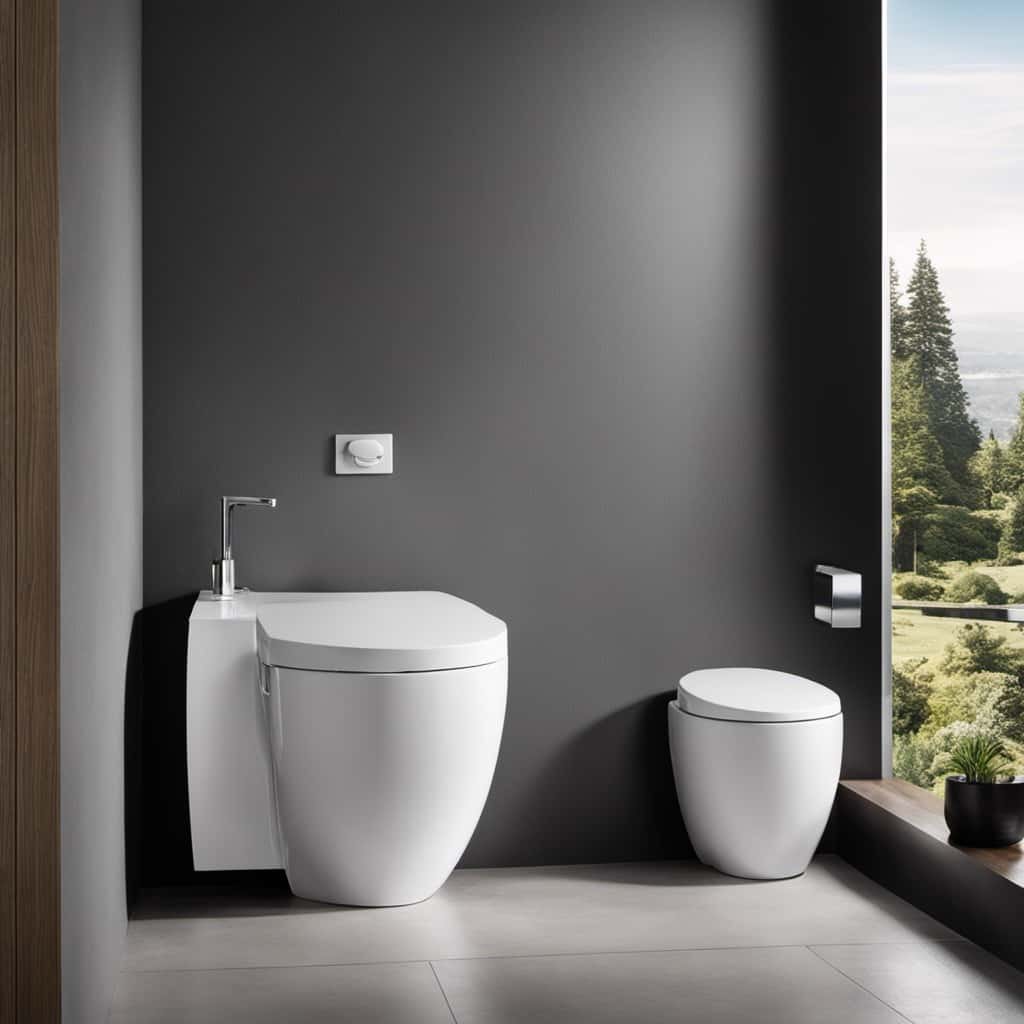
Flush Performance Improvement
To improve flush performance, we can continue by adjusting the water level in the toilet tank. The water level plays a crucial role in the flushing mechanism, as it determines the amount of water available for a powerful flush. If the water level is too low, it can result in a weak flush, causing clogs or incomplete waste removal.
On the other hand, if the water level is too high, it can lead to water wastage and inefficient flushing. By adjusting the water level, we can ensure optimal water flow improvement, maximizing the power and effectiveness of each flush. It’s important to find the right balance, ensuring enough water for a strong flush while avoiding unnecessary water consumption.
Clean the Rim Holes
To clean the rim holes, we will need a toilet brush and a cleaner specifically designed for removing mineral deposits. Cleaning the rim holes is an important step in improving the flushing performance of your toilet. Over time, mineral deposits can build up in the rim holes, causing water flow issues and reducing the effectiveness of the flush. By regularly cleaning the rim holes, you can ensure that water flows freely and efficiently, resulting in a more powerful flush. Here is a simple step-by-step guide to clean the rim holes:
| Step | Instructions |
|---|---|
| 1 | Apply the cleaner to the rim holes and let it sit for a few minutes. |
| 2 | Use the toilet brush to scrub the rim holes, focusing on removing any mineral deposits. |
| 3 | Flush the toilet to rinse away the cleaner and any loosened debris. |
Regularly cleaning the rim holes will help maintain the optimal flushing performance of your toilet.

Remove Mineral Deposits
To remove mineral deposits, we can use a descaling solution specifically designed for toilets. These deposits, also known as lime scale buildup, can accumulate over time and cause the toilet to flush slowly. The cleaning solution works by breaking down and dissolving the mineral deposits, allowing for improved water flow.
When using the solution, it’s important to follow the instructions provided by the manufacturer and ensure proper ventilation in the bathroom. After applying the cleaning solution, allow it to sit for the recommended amount of time before scrubbing the toilet bowl with a toilet brush. Rinse the bowl thoroughly with water to remove any residue.
Once the mineral deposits have been removed, it’s time to move on to the next step: checking the fill valve.
Check the Fill Valve
Now let’s move on to examining the fill valve to continue troubleshooting the slow flushing toilet.
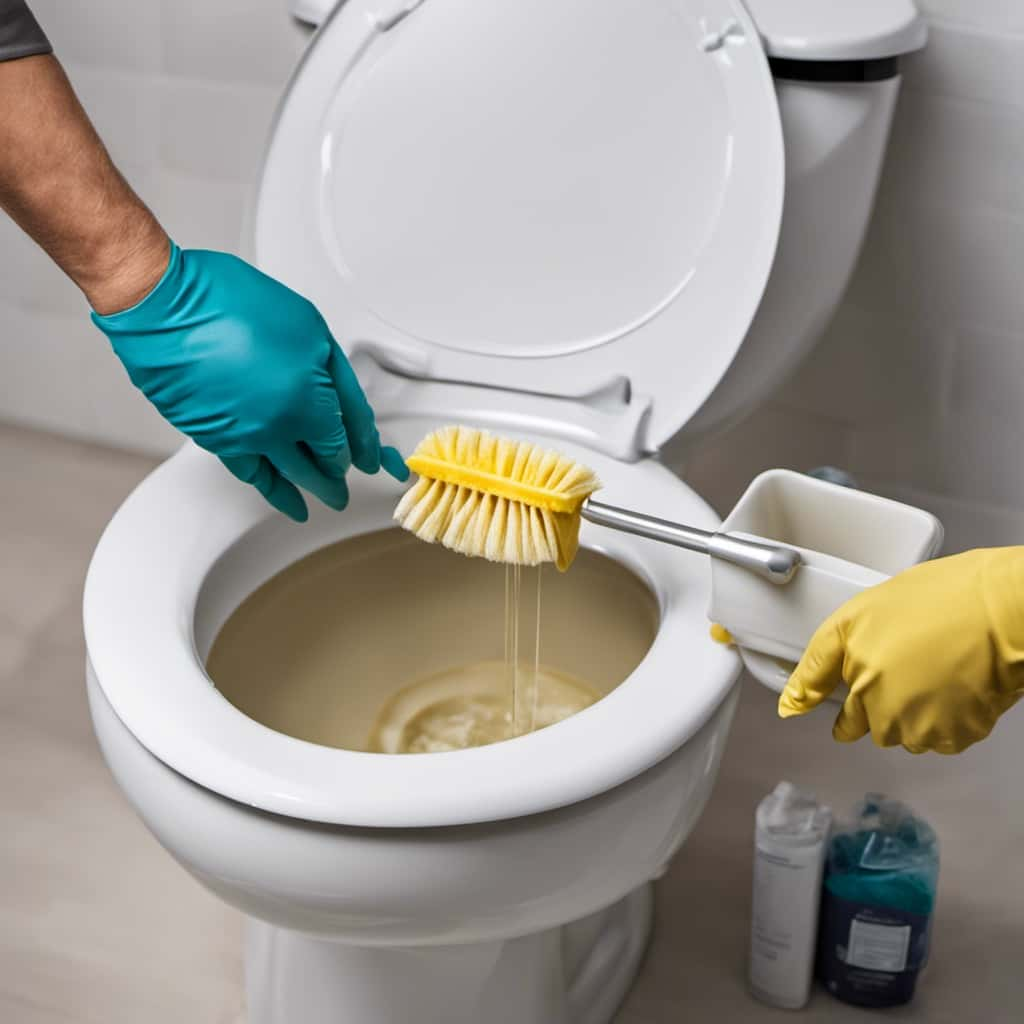
The fill valve is responsible for regulating the water level inside the toilet tank. If it isn’t functioning properly, it can lead to a slow flush.
To check the fill valve, first, ensure that the water supply to the toilet is turned off. Then, remove the tank lid and locate the fill valve, usually positioned on the left side.
Inspect the valve for any visible signs of damage or debris. Clean the valve and its components thoroughly, paying special attention to the flapper, which controls the water release.
If necessary, adjust the water pressure to ensure proper functioning of the fill valve. Regular flapper maintenance and periodic water pressure adjustment are essential for maintaining a fast and efficient flush.
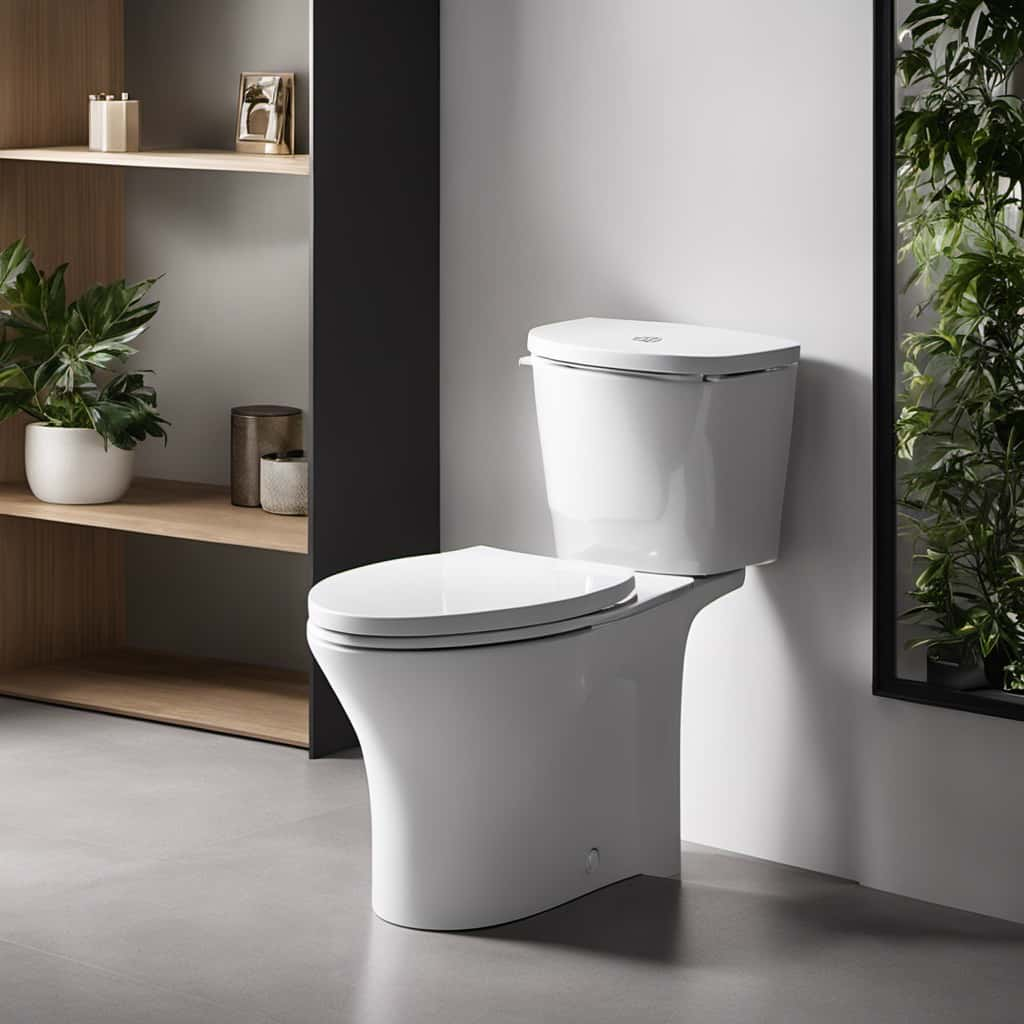
Replace the Flapper
We can replace the flapper to address a slow flushing toilet. The flapper is a valve that controls the flow of water from the tank to the bowl. Over time, the flapper can wear out or become damaged, leading to a decrease in flushing performance.
Here are some flapper maintenance and repair techniques:
- Inspect the flapper for any signs of wear or damage, such as cracks or leaks.
- Clean the flapper and the surrounding area to remove any debris or mineral buildup that may be affecting its performance.
- If necessary, replace the flapper with a new one that’s compatible with your toilet model.
Install a New Flush Valve
To continue addressing a slow flushing toilet and improve its performance, let’s move on to installing a new flush valve.
The flush valve is responsible for releasing water from the tank into the bowl during a flush. Over time, the seals on the flush valve can deteriorate, causing leaks and reducing the flushing efficiency.
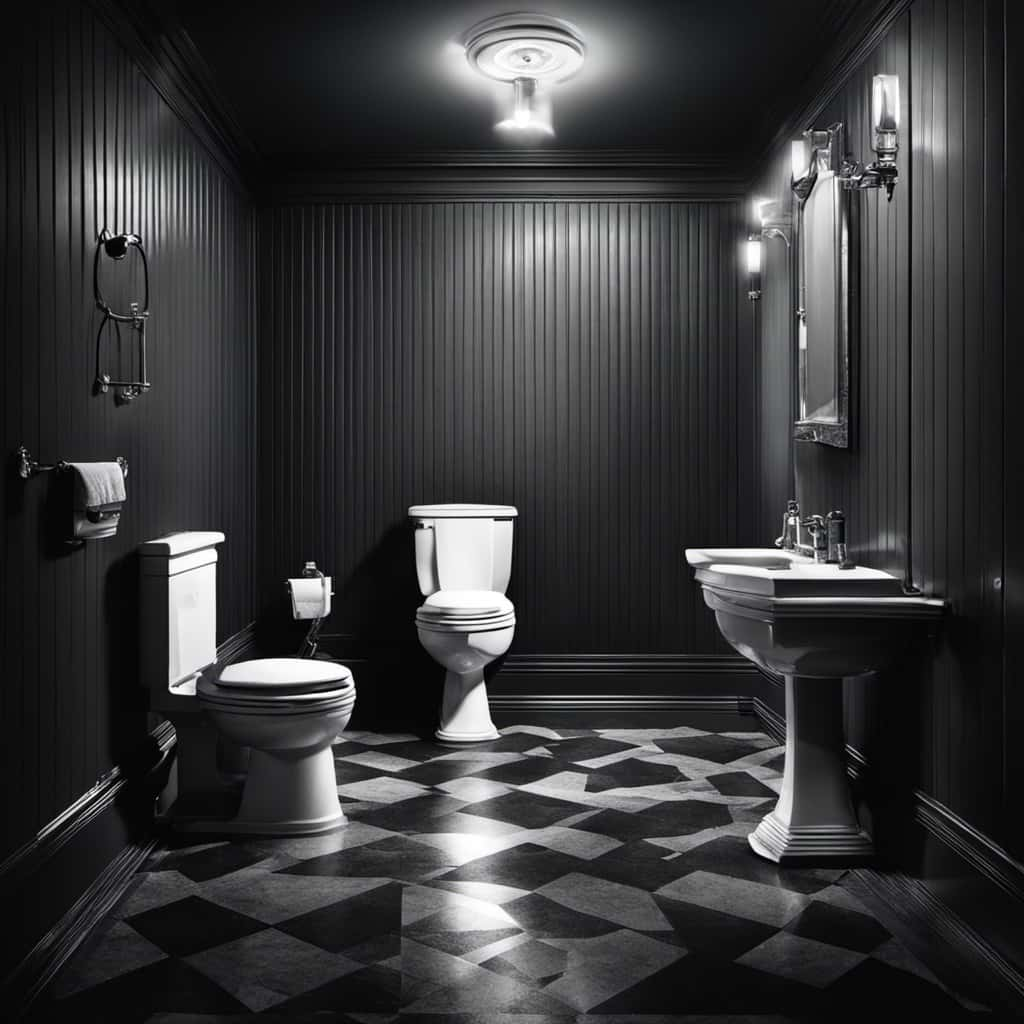
To start, turn off the water supply and drain the tank. Remove the old flush valve by unscrewing the locknut and lifting it out. Inspect the seals for any signs of wear or damage. If necessary, replace them with new ones.
Install the new flush valve by inserting it into the tank and securing it with the locknut. Finally, turn on the water supply and test for any leaks. By troubleshooting leaks and inspecting seals, installing a new flush valve can help resolve the issue of a slow flushing toilet.
Now, let’s move on to the next step: upgrading the flush handle.
Upgrade the Flush Handle
To begin upgrading the flush handle, we’ll need to gather the necessary tools and materials.
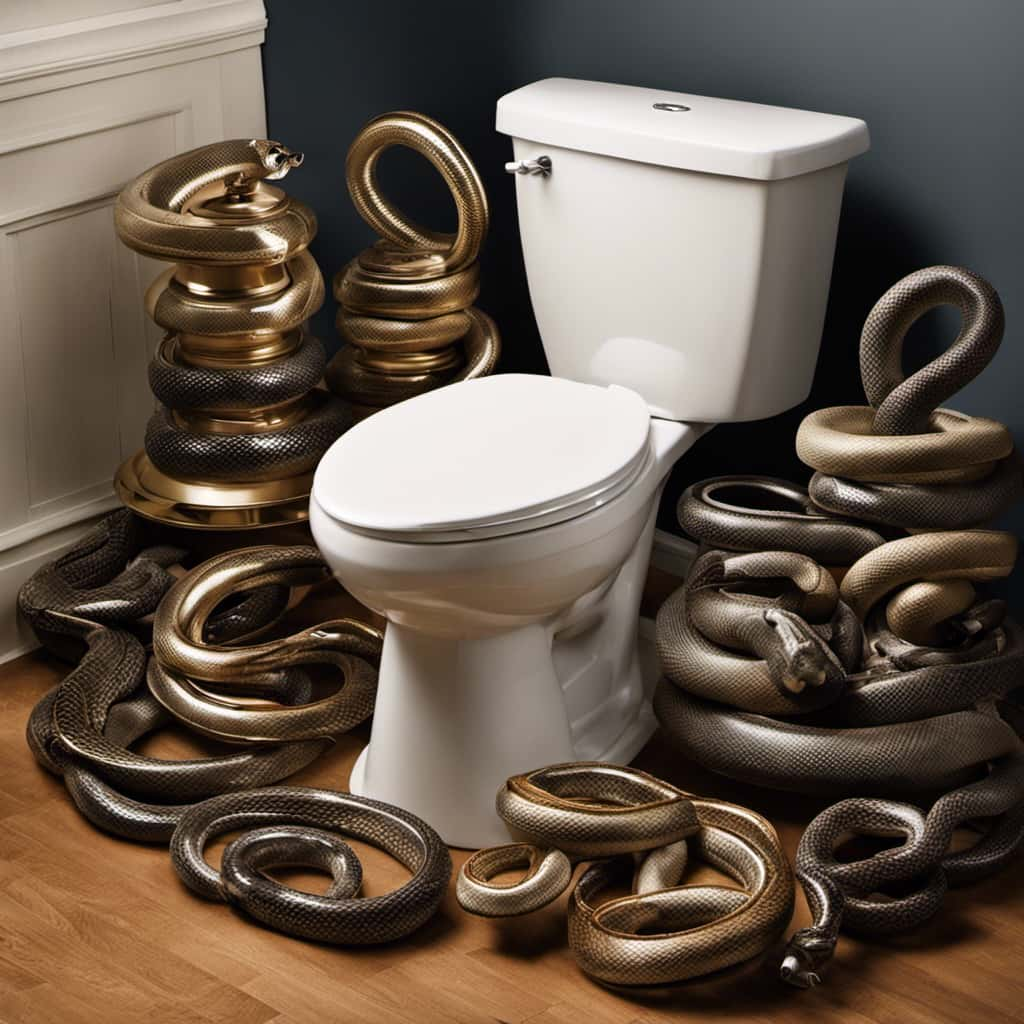
Here are some upgrade options and troubleshooting tips to consider:
- Choose a sturdy and durable flush handle made of high-quality materials like brass or stainless steel.
- Opt for a dual-flush handle that allows you to control the amount of water used for flushing, saving water and reducing your water bill.
- Consider a decorative flush handle that adds a touch of style to your bathroom.
When troubleshooting a slow flushing toilet, upgrading the flush handle can improve flushing performance. Sometimes a worn-out or faulty handle can cause the flush to be weak or ineffective. By upgrading to a better handle, you can ensure a smoother and more efficient flushing process.
Check the Water Supply Line
Let’s take a look at the water supply line to troubleshoot the slow flushing issue.
There are a few potential problems that could be causing this, such as a clogged supply line, low water pressure, or a faulty shut-off valve.
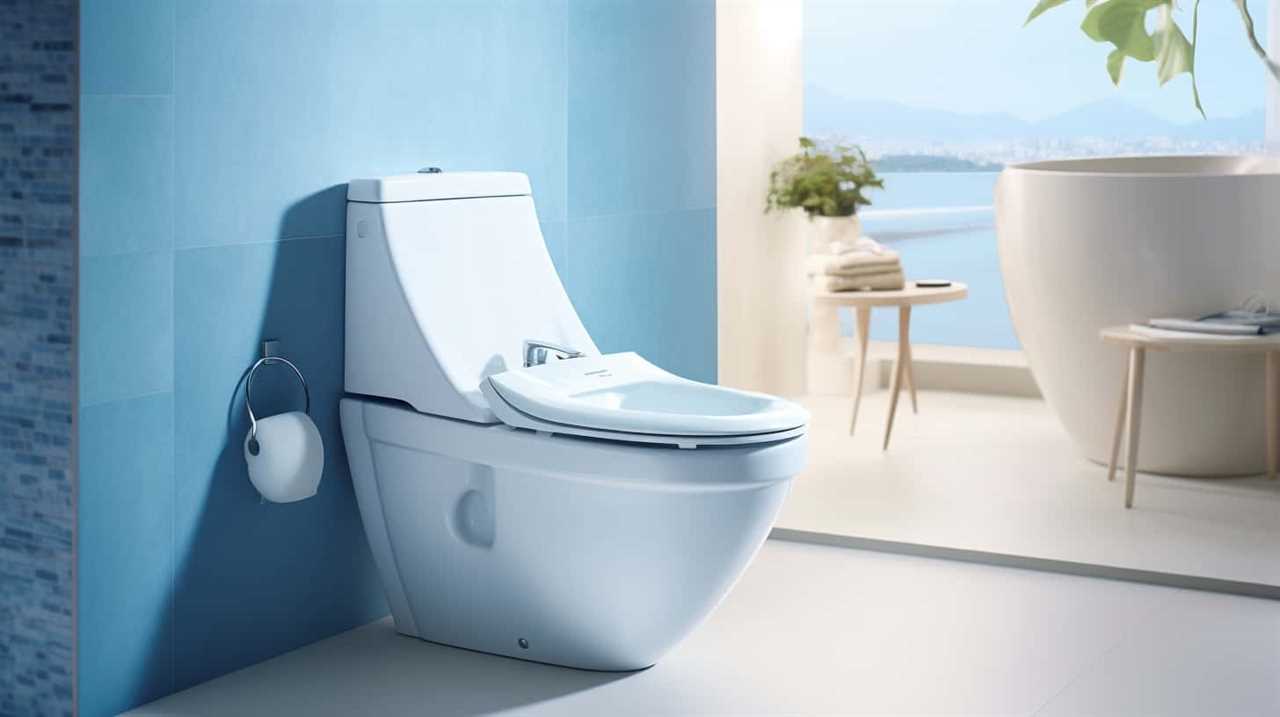
Clogged Supply Line
We need to check the water supply line for any clogs to diagnose the cause of a slow flushing toilet. A clogged supply line can cause a decrease in water pressure, leading to a weak flush.
Here’s what you need to do:
- Inspect the supply line: Check for any visible obstructions or debris that may be blocking the flow of water. Use a flashlight to get a clear view.
- Remove the clog: If you find a clog, use a plumber’s snake or a wire hanger to carefully remove it. Be gentle to avoid damaging the supply line.
- Test the water pressure: Turn on the water supply and observe the pressure. If it’s low, there may be water pressure issues that need to be addressed.
Low Water Pressure
After checking for any clogs in the supply line, it’s important to address the issue of low water pressure to restore proper flushing function to the toilet. Low water pressure can cause inadequate flushing and slow drainage.
To increase flow and resolve this problem, you may need to adjust the water pressure regulator. This regulator is typically located near the main water supply valve or where the main water line enters your house. By turning the regulator clockwise, you can increase the water pressure to the toilet. However, it’s crucial to make small adjustments and test the flushing function after each adjustment to avoid damaging the toilet or other plumbing fixtures.
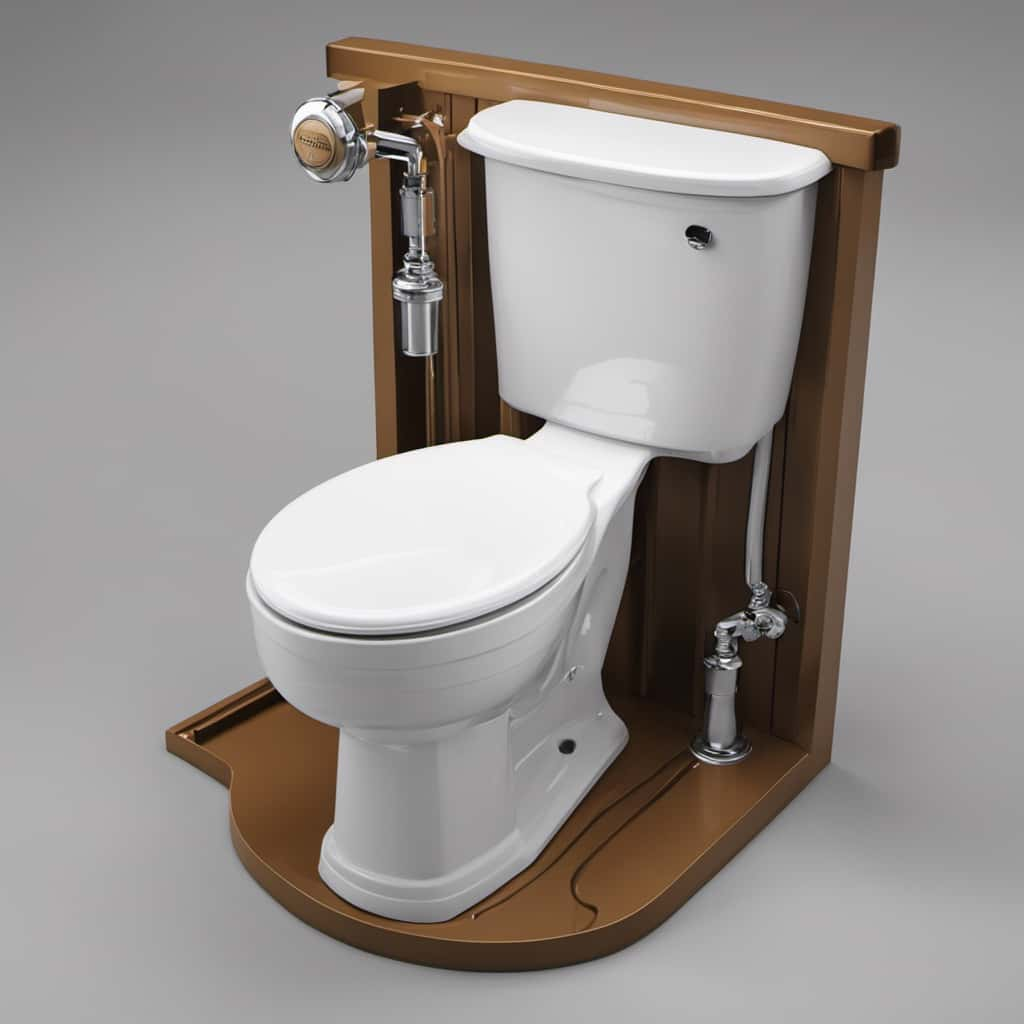
If adjusting the regulator doesn’t solve the problem, it may be necessary to call a professional plumber for further assistance.
Faulty Shut-Off Valve
To diagnose and address a slow flushing toilet, we must first examine the water supply line for a faulty shut-off valve. A shut-off valve is responsible for controlling the flow of water into the toilet tank. If it isn’t functioning properly, it can lead to inadequate water supply and result in a weak flush.
Here are some common shut-off valve issues that may require attention:
- Leaking shut-off valve: If you notice water dripping or pooling around the shut-off valve, it may need to be replaced. A leaking valve can disrupt the water flow and cause a slow flush.
- Corroded shut-off valve: Over time, shut-off valves can become corroded, hindering their ability to open and close properly. This can restrict water flow and affect the flushing performance.
- Malfunctioning shut-off valve: Sometimes, shut-off valves can become stuck in the closed position, preventing water from entering the toilet tank. This can cause a weak flush or even a complete lack of flushing.
Addressing shut-off valve issues is crucial for restoring proper flushing functionality. If you encounter any of these problems, consider replacing the shut-off valve to ensure a smooth flow of water and a strong flush.
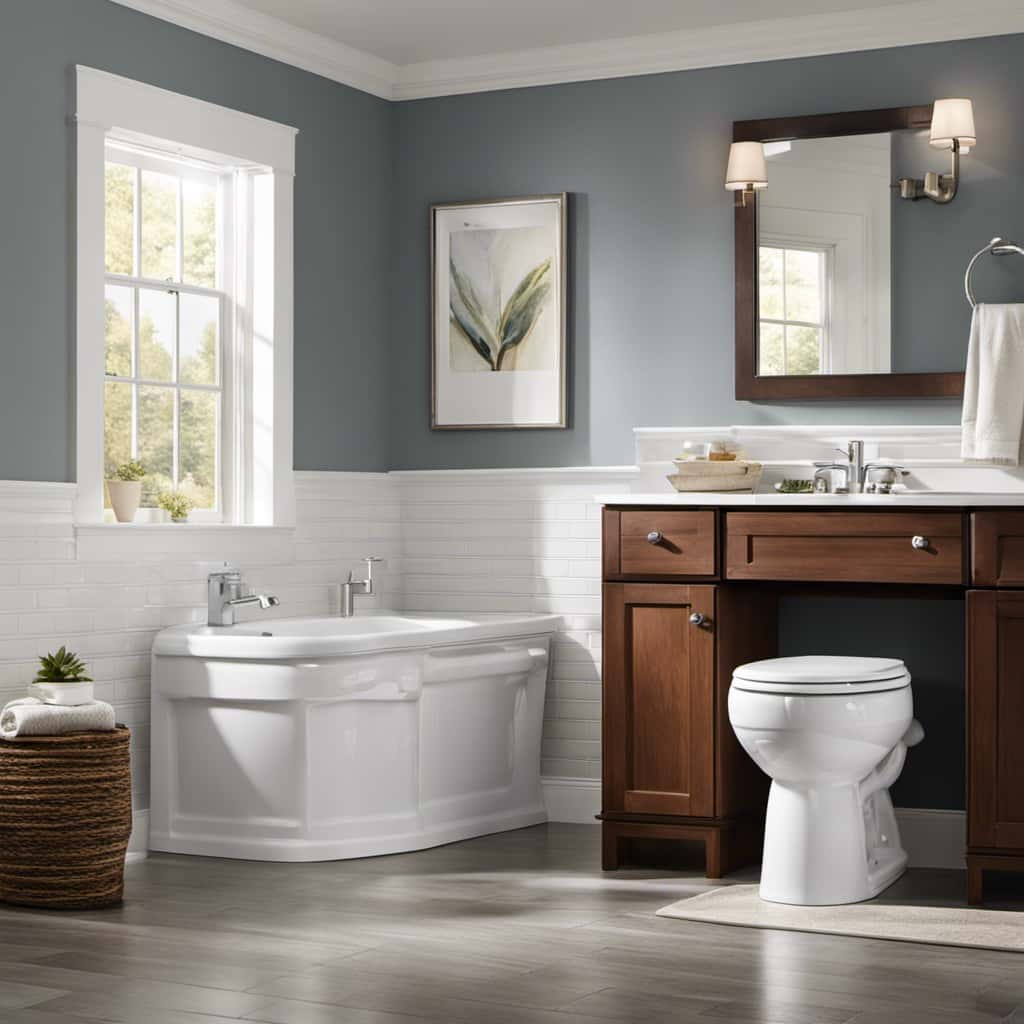
Adjust the Float
One option to address a slow flushing toilet is to adjust the float. The float is a mechanism that controls the water level in the toilet tank. If the float isn’t adjusted properly, it can lead to insufficient water flow during flushing.
To fix this issue, start by locating the float in the toilet tank. It’s usually a ball or a cylinder attached to a metal arm. To adjust the float, simply bend the arm up or down until the desired water level is achieved.
If the float is damaged and can’t be adjusted, it may need to be replaced. This can be done by purchasing a new float from a hardware store and following the manufacturer’s instructions for installation.
Unclog the Trap
Next, let’s move on to addressing the issue of a slow flushing toilet by unclogging the trap. To ensure a smooth and efficient flow of water, it’s important to inspect the siphon jet and check the water pressure. Here are three steps to help you unclog the trap:
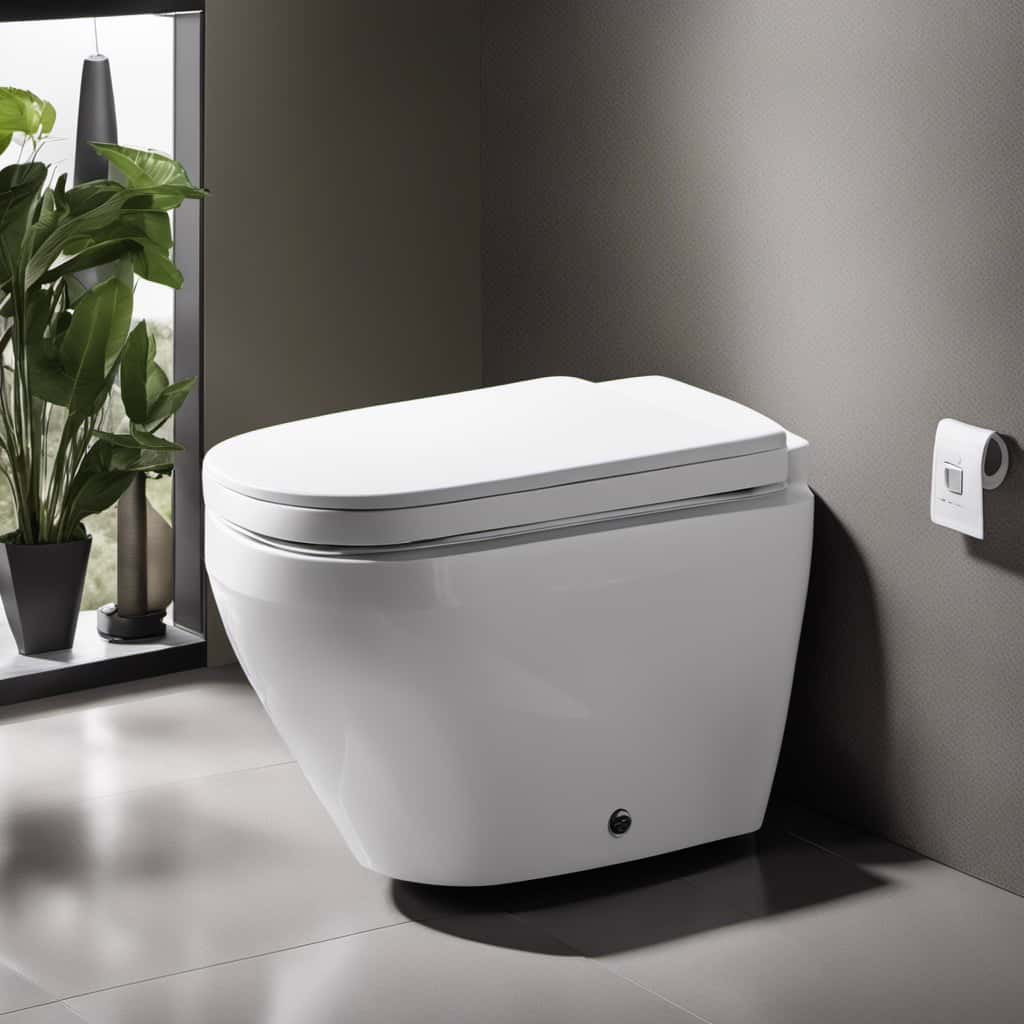
- Start by inspecting the siphon jet, which is located at the bottom of the toilet bowl. Use a flashlight to check for any debris or mineral deposits that might be blocking the jet. If you notice any blockages, clean them using a wire brush or a toilet auger.
- Next, check the water pressure. Low water pressure can contribute to a slow flushing toilet. Make sure the water supply valve is fully open and that there are no obstructions in the pipes. If necessary, contact a professional plumber to assess and adjust the water pressure.
- Finally, consider using a plunger to dislodge any remaining clogs. Place the plunger over the drain opening and create a tight seal. Push down firmly and then pull up quickly to create suction and dislodge the blockage.
Check the Vent Pipe
Now let’s talk about the importance of checking the vent pipe when dealing with a slow flushing toilet.
A blocked vent pipe can greatly affect the flushing performance, causing water to drain slowly or not at all.
It’s crucial to ensure that the vent pipe is properly installed and maintained to allow for proper air flow and avoid any potential obstructions.
Blocked Vent Pipe
To fix a slow flushing toilet, we need to check the vent pipe for any blockages. A blocked vent pipe can cause the toilet to flush slowly or not at all. Here are some things to consider when checking for a blocked vent pipe:
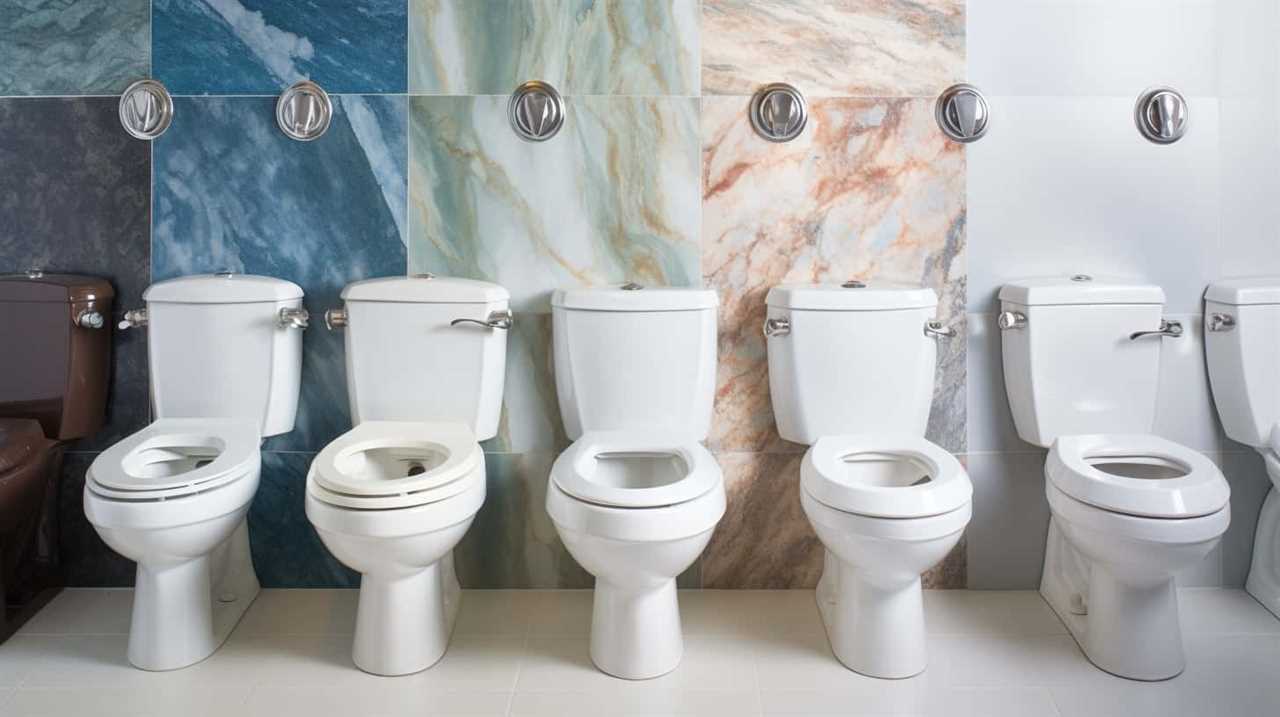
- Inspect the vent pipe: Look for any signs of obstruction such as debris, bird nests, or leaves. Use a flashlight to get a better view of the inside of the pipe.
- Clear the blockage: If you find any obstructions, use a plumber’s snake or a high-pressure water jet to clear the vent pipe. Be careful not to damage the pipe while doing this.
- Prevent future blockages: To avoid future issues, consider installing a mesh screen or bird guard on the vent pipe to prevent debris from entering.
Proper Vent Pipe
We can start by checking the vent pipe to ensure it’s properly installed and functioning. Proper venting is crucial for the efficient operation of a toilet. The vent pipe allows air to enter the plumbing system, preventing airlock and maintaining proper pressure.
To check the vent pipe installation, first, locate the vent pipe on the roof and ensure it isn’t blocked by debris or bird nests. Next, inspect the pipe for any cracks, gaps, or disconnections. These can cause air leaks, disrupting the suction needed for effective flushing. If any issues are found, it’s recommended to consult a professional plumber for proper vent pipe repair or replacement.
Ensuring the vent pipe is correctly installed is essential for maintaining a properly functioning toilet.
Transitioning into the next section on vent pipe maintenance, let’s explore how to keep the vent pipe in good condition.
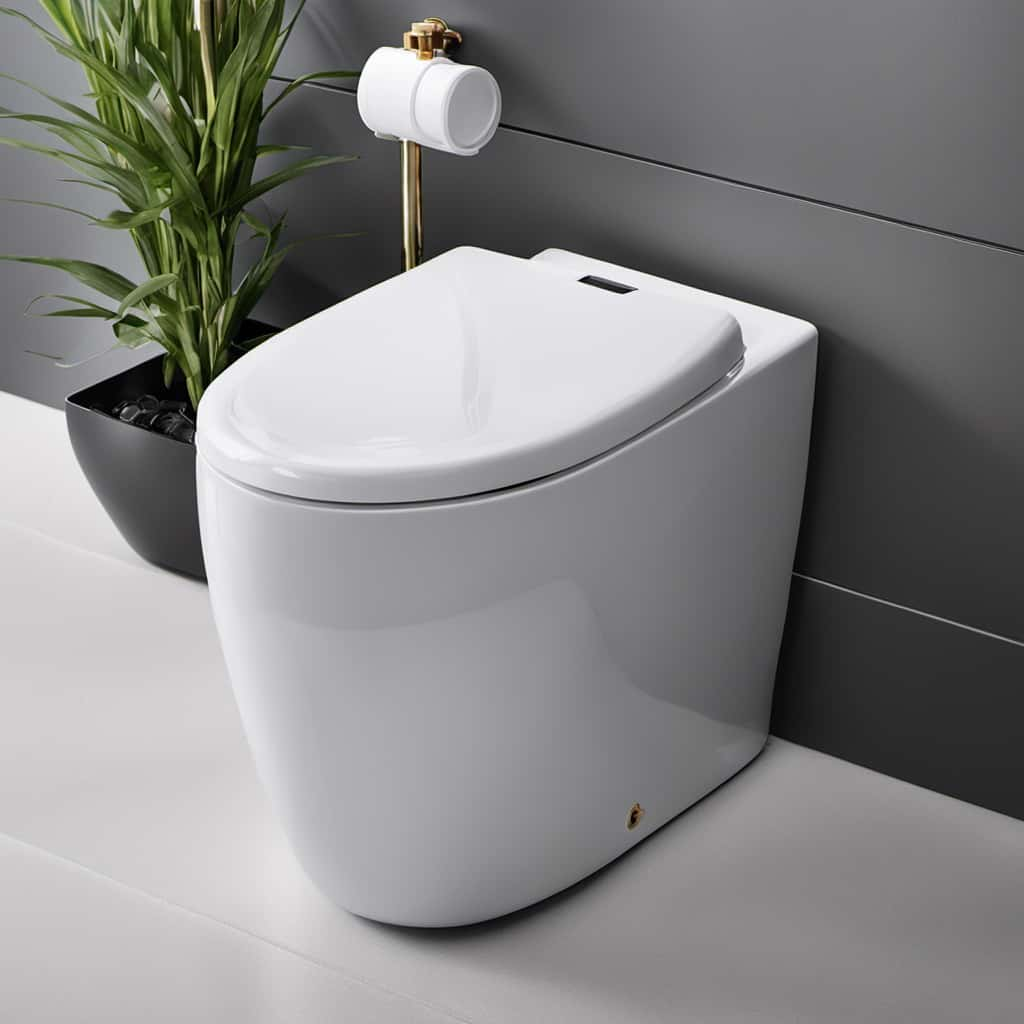
Vent Pipe Maintenance
After checking the vent pipe installation for any issues, it’s important to regularly maintain the vent pipe to ensure it remains in good condition. Proper vent pipe maintenance is crucial for maintaining the optimal functioning of your toilet.
Here are some key steps to follow for vent pipe maintenance:
- Perform regular vent pipe cleaning: Over time, debris and dirt can accumulate in the vent pipe, obstructing the airflow. To prevent this, it’s essential to clean the vent pipe periodically. Use a plumbing snake or a high-pressure water jet to remove any clogs or buildup.
- Inspect the vent pipe for damage: Regularly check the vent pipe for any signs of damage, such as cracks, leaks, or loose fittings. If you notice any issues, it’s important to promptly repair them to prevent further damage and maintain proper ventilation.
- Ensure proper vent pipe insulation: Insulation is crucial for preventing condensation and maintaining the optimal temperature inside the vent pipe. Make sure the vent pipe is properly insulated to avoid any heat loss or condensation buildup.
Call a Professional Plumber
For a slow flushing toilet, it is best to reach out to a professional plumber. While there are some troubleshooting steps you can take on your own, a plumber has the expertise and tools to diagnose and fix the issue efficiently. They can assess the flushing mechanism and determine if any components need to be repaired or replaced. Additionally, a plumber can check the water pressure and make any necessary adjustments to ensure optimal flushing performance. Here is a table summarizing the benefits of calling a professional plumber:
| Benefits of Calling a Professional Plumber |
|---|
| Expertise in diagnosing and fixing toilet issues |
| Access to specialized tools and equipment |
| Ability to adjust water pressure for optimal flushing performance |
Conclusion
In conclusion, a slow flushing toilet can be fixed by following a few simple steps.
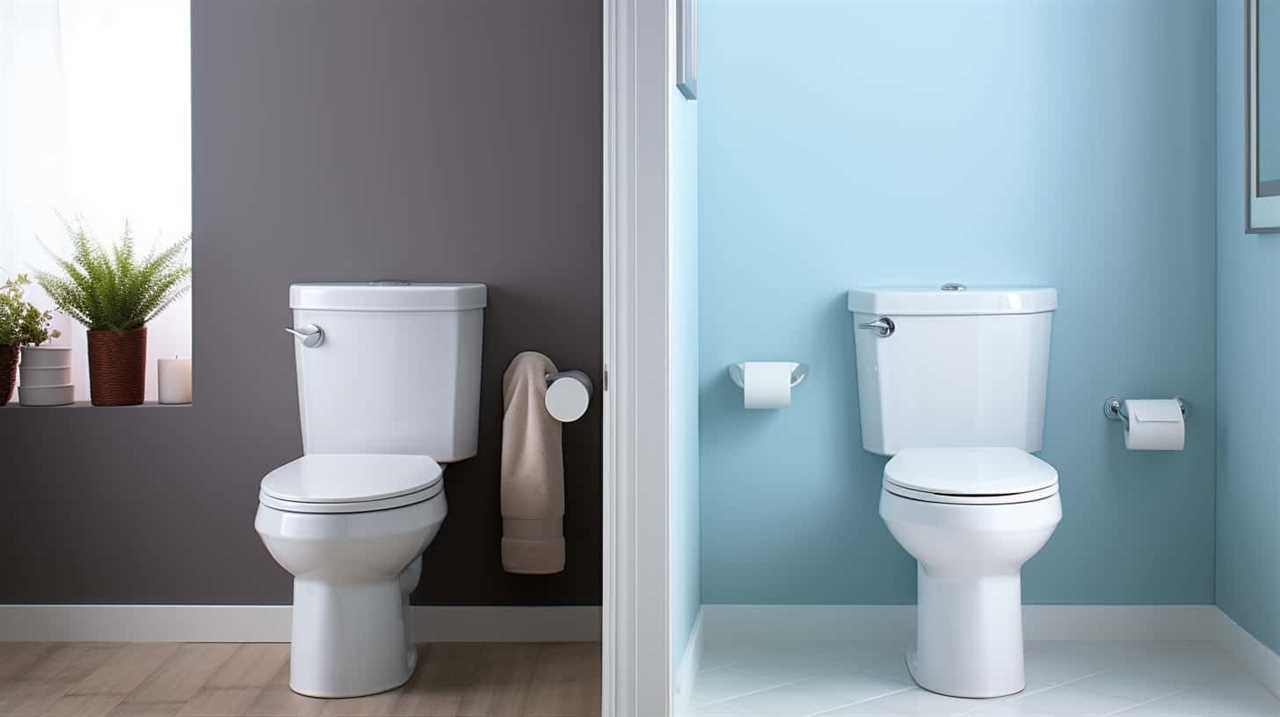
By checking for clogs, inspecting the flapper, adjusting the water level, cleaning the rim holes, removing mineral deposits, and adjusting the float, you can ensure your toilet functions properly.
If all else fails, don’t hesitate to call a professional plumber.
Remember, a smoothly flushing toilet is like a well-oiled machine, keeping the flow of life running smoothly.



